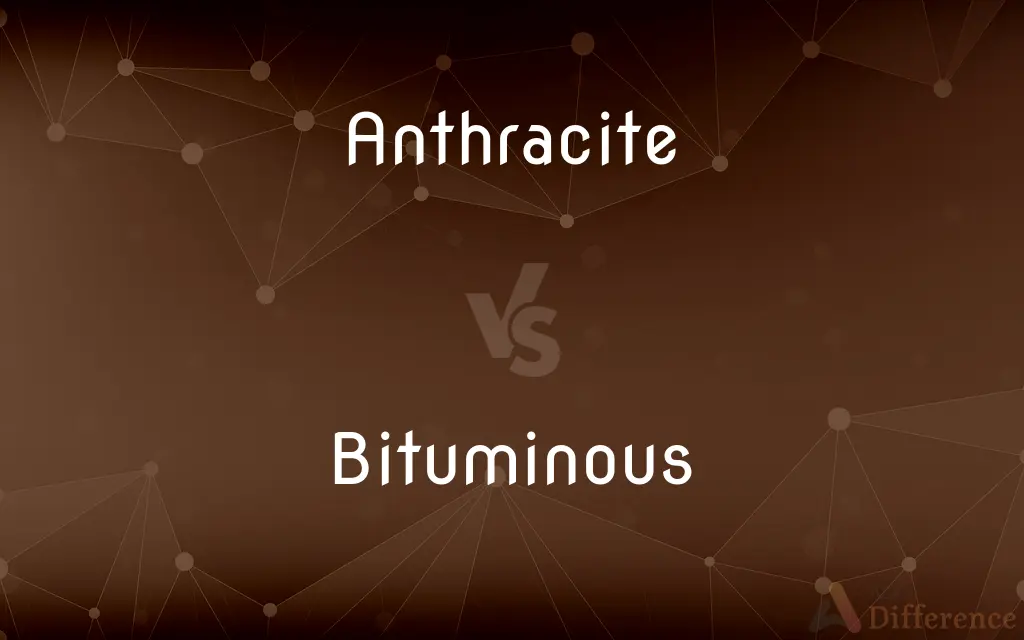Anthracite vs. Bituminous — What's the Difference?

Difference Between Anthracite and Bituminous
ADVERTISEMENT
Compare with Definitions
Anthracite
Anthracite, also known as hard coal, and black coal, is a hard, compact variety of coal that has a submetallic luster. It has the highest carbon content, the fewest impurities, and the highest energy density of all types of coal and is the highest ranking of coals.
Bituminous
Like or containing bitumen.
Anthracite
A dense, shiny coal that has a high carbon content and little volatile matter and burns with a clean flame. Also called hard coal.
Bituminous
Of or relating to bituminous coal.
Anthracite
A form of carbonized ancient plants; the hardest and cleanest-burning of all the coals.
ADVERTISEMENT
Bituminous
Of or pertaining to bitumen.
Anthracite
A dark grey colour.
Bituminous
(uncountable) Bituminous coal.
Anthracite
A hard, compact variety of mineral coal, of high luster, differing from bituminous coal in containing little or no bitumen, in consequence of which it burns with a nearly non luminous flame. The purer specimens consist almost wholly of carbon. Also called glance coal and blind coal.
Bituminous
(countable) A type or grade of bituminous coal.
Anthracite
A hard natural coal that burns slowly and gives intense heat
Bituminous
Having the qualities of bitumen; compounded with bitumen; containing bitumen.
Near that bituminous lake where Sodom flamed.
Bituminous
Resembling or containing bitumen;
Bituminous coal
Share Your Discovery

Previous Comparison
Notion vs. Slack
Next Comparison
Unordered vs. Disordered














































